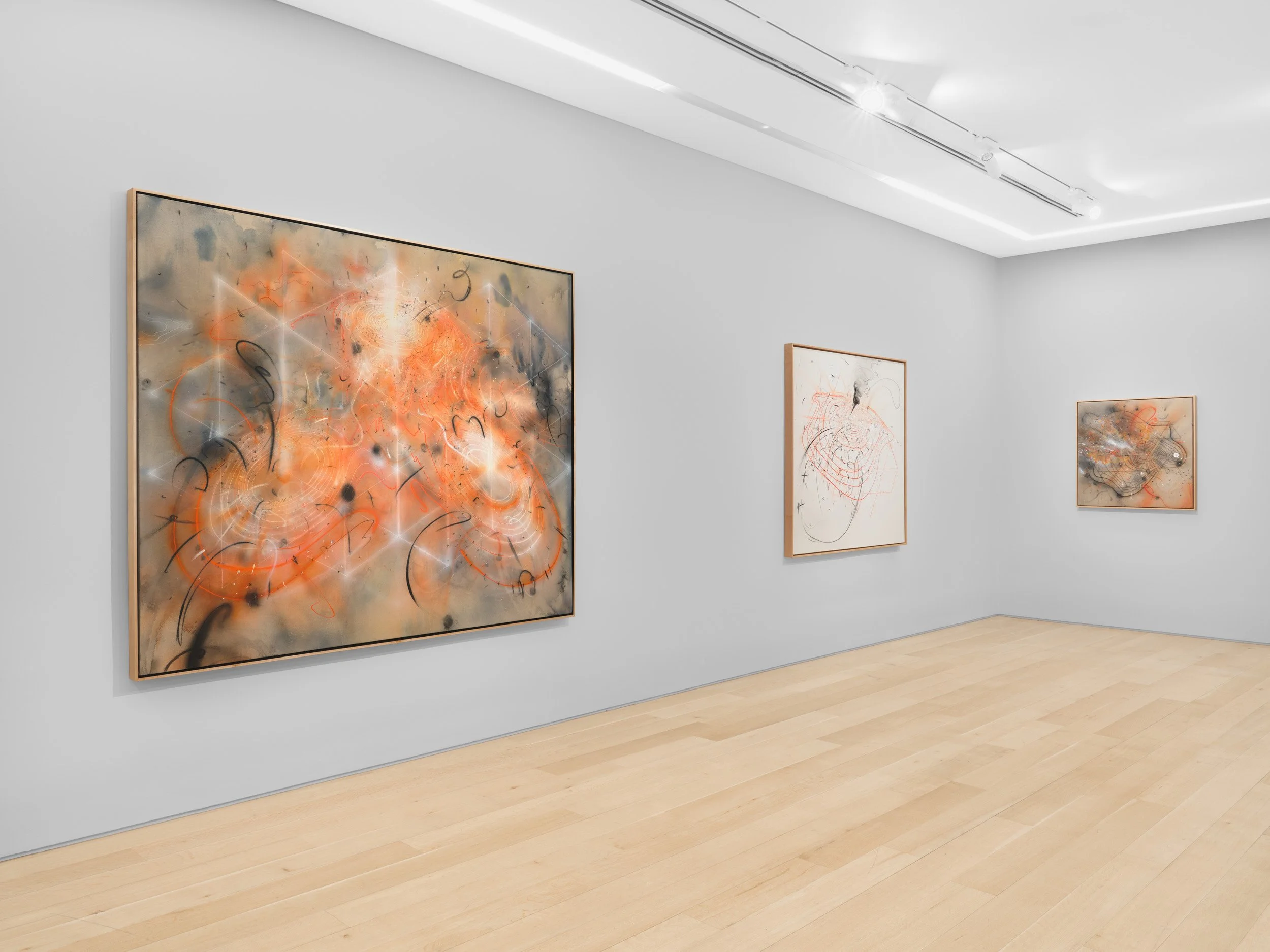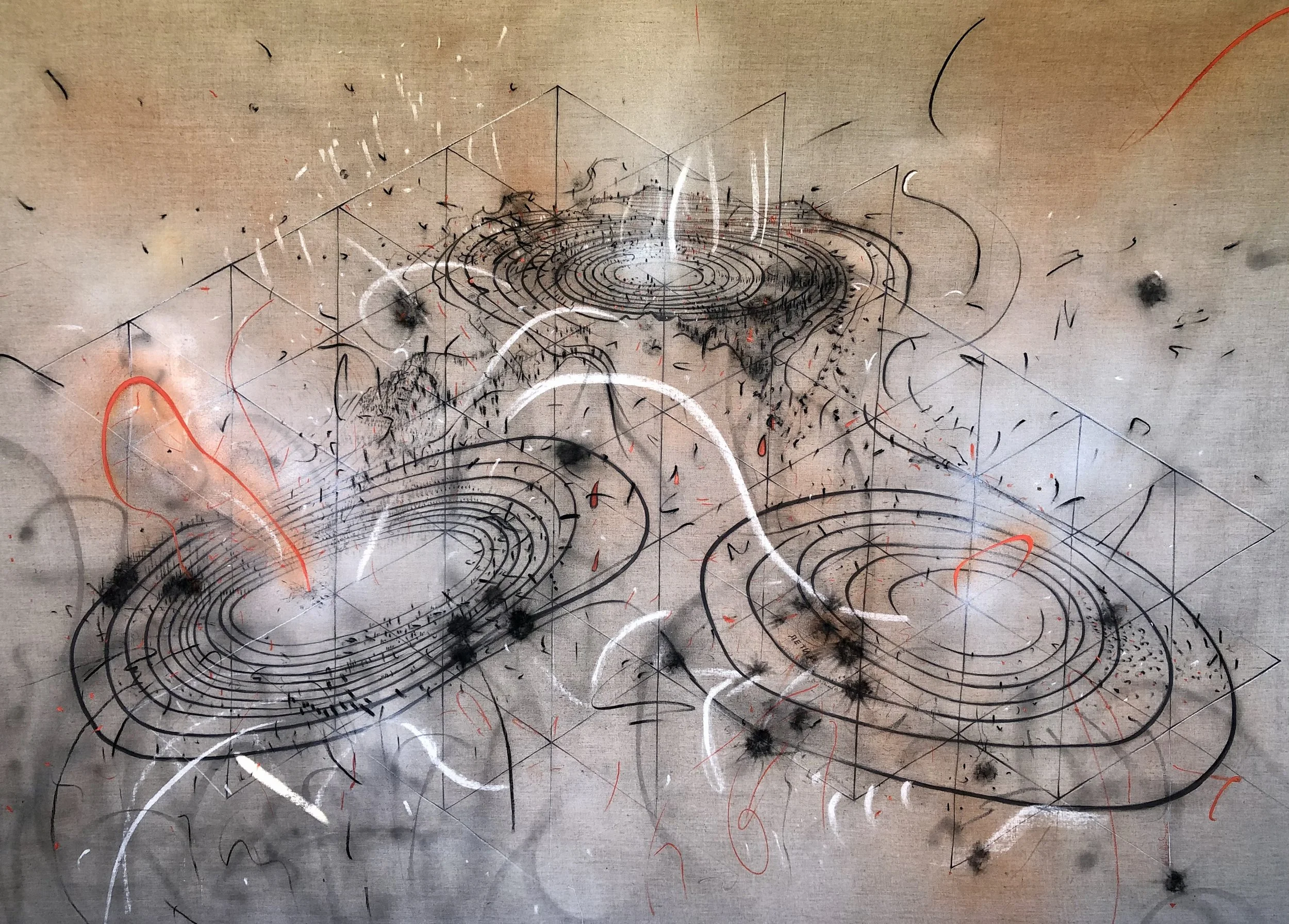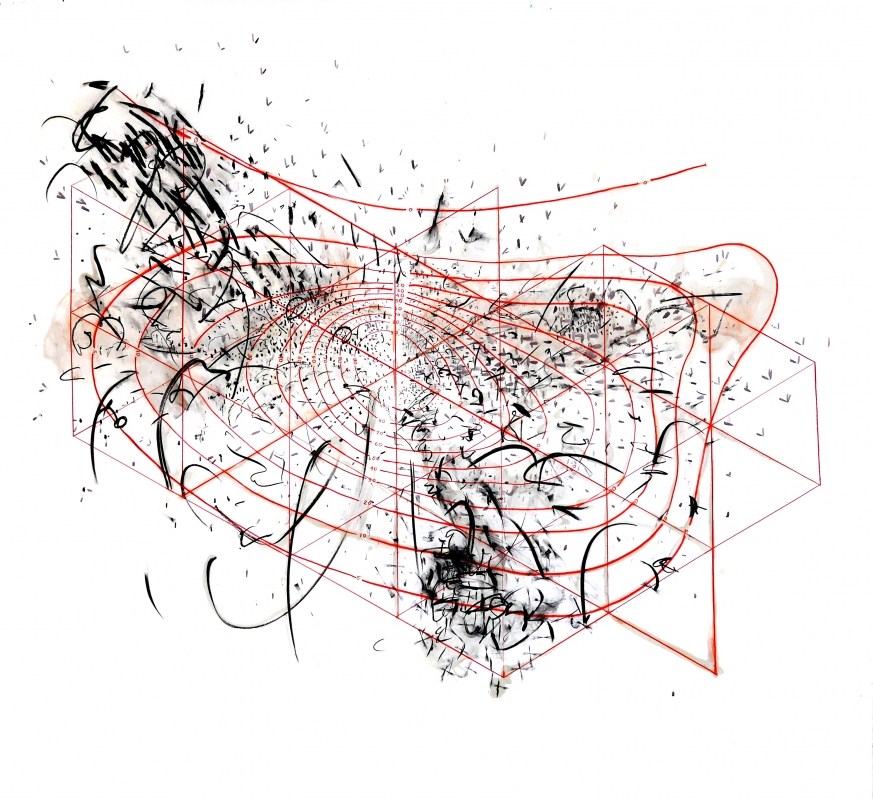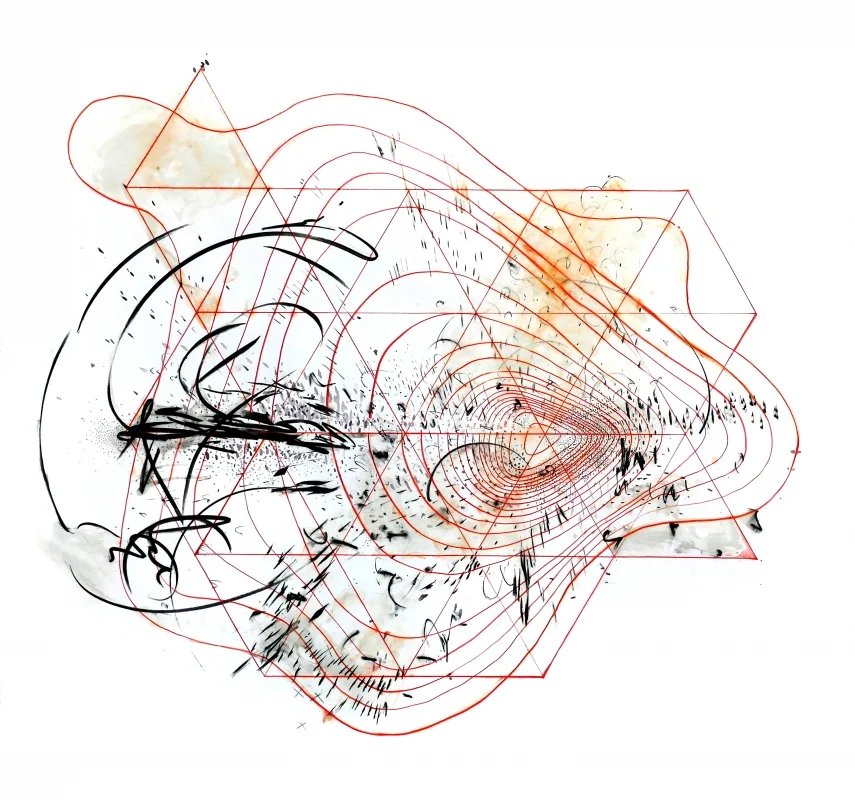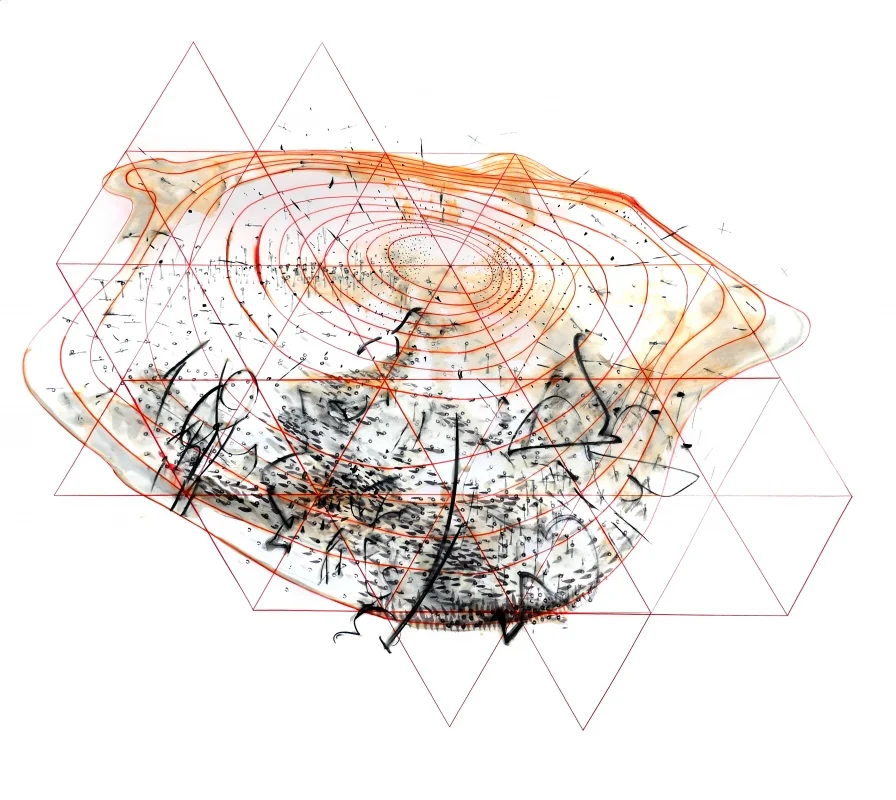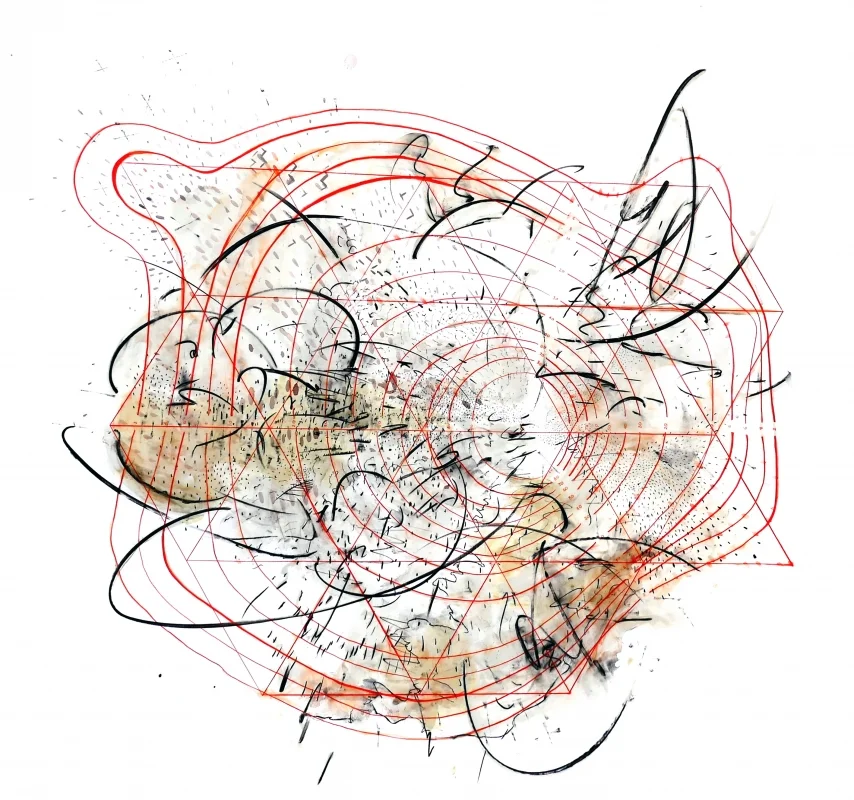Isorithm Series
The Isorithm series grew out of my research for Double Vision a collaborative project with Andrea Steves and Francois Hughes. I located a Cold War era, declassified military manual which gave step by step instructions on how to create maps that predict the impact of nuclear bomb airbursts; showing fatal and non- fatal casualty isorithms over particular types of habitable regions. I was struck by the immense tension between the elegant geometries and rational calculations of these maps, juxtaposed against the irrational chaos and mass destruction they represent. I draw on my personal experience of growing up in the USSR at the end of the Cold War as well as the ever increasing tensions of the current political climate now, to create charcoal and ink marks made by gestures and physical movements that react to and synthesize the complex relationship between these two countries.
These works attempt to reconcile nuclear war rationalized through a mathematic formula, by offering empathetic gestures to representations of violence and destruction.
Isorithm at Qualia Contemporary
March 2021, Exhibition Review by Alexander Nemerov
The knife’s-edge of destruction and creation, each line embodying both, makes me examine anew my own too-dreamy latitude, the space I give myself, for imagining a lyricism without destruction, without geopolitical connotation or context; as if there could be a work of art that did not produce, and come from, “fall out.”
Yet the beauty of these maps, if that is a fitting term, is that they portray a music—a score, half meteorology, half symphony—that feels as invented, as bravura, as that of any Romantic composer. If Mendelssohn wrote of the Cold War, perhaps his music would be such as these pictures portray: a windswept topography, of heaths and valleys and flattened forests, created by the music itself: a depiction of the composer’s mind, his experience, emerging from those patterned links of connection and destruction.
This work is as ranging and inventive as the wind, truly as free as can be— it takes its dose of “the real world” not as a guilt-inducing reduction of that pleasure, not as a required terror that, as it were, “allows” the freedom; but as one and the same thing as the freedom.
What the viewer experiences foremost (at least this viewer) is the sense of a world that is dramatically determined by horror—mapped out by it—in which, and indeed out of which, a person may yet invent their own system, their own music, an invention that arises not out of destruction but independent of it. This is what I take from the flourishing marks and exuberant scale and size: a kind of world-making that is both undeceived about the "real world” and yet genuinely, hopefully, willing to make something different than it.


